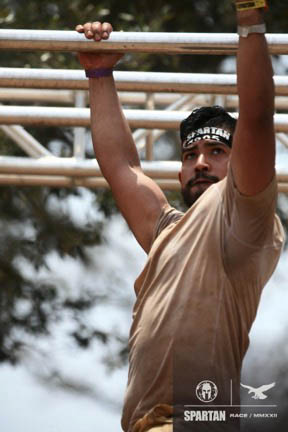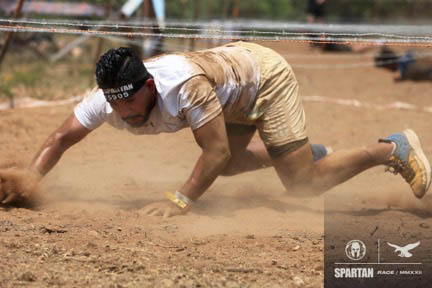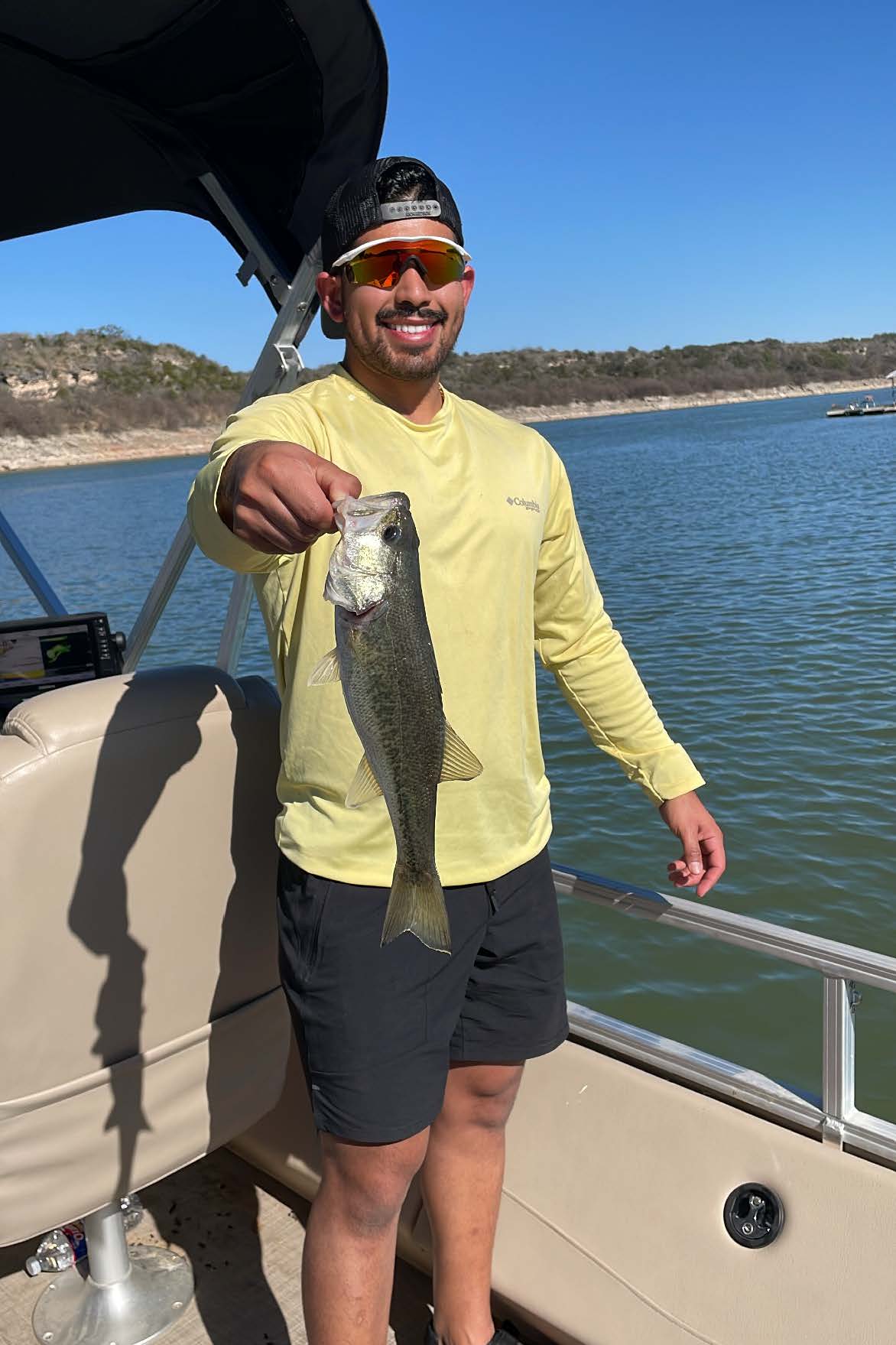How I Trained for the Spartan Race

Running a Spartan Race sounds intimidating, but does it take an actual “Spartan”?
I’ve always wanted to attempt the race since I first heard of it in 2010. During high school, I pushed it to the back burner until I signed up for my first Spartan Race after seeing an Instagram ad post-college.
However, I’d never trained for one. During high school, I played sports like football and track, so my training was tailored toward athletic ability and power. In college, I switched to bodybuilding training.
I decided to run the 10K Super Spartan Race; I wanted to go all-in. However, I only had a month to prepare. After researching, I realized I needed to learn how to jump over 7-foot walls, climb monkey bars, complete a rope climb, grapple on walls, carry a 60-pound sandbag and more.
The Training

The catch was I didn’t know which obstacles came first. I switched from bodybuilding-style training to a mixture between CrossFit and athletic-style training. I had a solid strength foundation, but my problem was grip-strength, so I worked lots of farmer’s carries and unilateral movements involving weight on one side of the body.
As I got the hang of a new training style, I started incorporating mileage into my post-exercise routine. Many wondered why I did this at the end instead of the beginning. My philosophy was simple — the obstacles are testing my strength and endurance. Therefore, it was best to incorporate mileage at the end when my glycogen stores in the muscles were depleted. It took my training to a different level.
As each training session went by, I soon realized preparation was more difficult than I imagined. Each workout consisted of core strength about 2 to 3 times a week and plyometrics three times a week to prepare for climbing and jumping. Each day was a different workout split focusing on endurance with a heavyweight.
Mondays consisted of leg circuits like squats, lunges, Bulgarian split squats and box jumps, ending with a 2-mile run at a 6% incline. Tuesdays were a “pull” day to work on my back and hamstrings, ending with core exercises and a 1-mile run. Wednesdays were a “push” day for shoulders and chest, consisting of movements that helped me have a strong foundation to carry weight in front and overhead, ending with a 2-mile run at a 6% incline. Thursdays consisted of a whole-body circuit including exercises like farmer’s carries, kettlebell swings, pullups, box jumps, hip exercises for mobility and core work to stabilize the spine.
The race consisted of climbing walls and relying on grip strength. If you’re unable to do so, then you have to do 30 burpees or a penalty loop. So I visited a climbing center in Austin to practice bouldering, which humbled me knowing I wasn’t an avid climber, but it was a good predictor of how I’d do in the race.
One week out from race day, I started carb loading. I carb-loaded the entire seven days, eating about 300 grams of carbohydrates each day and drinking over a gallon of water to stay hydrated. Once race day was two days out, I switched to less fiber-rich foods to reduce gastrointestinal distress.
The Race

It was a hot Saturday afternoon with a temperature around 98 degrees and high humidity. When I approached the starting line after a dynamic warmup, I felt confident in my ability to run my first Spartan Race.
As I approached the first three miles, the heat began to take a toll, and my confidence began to drop as I’d only completed 11 of the obstacles with at least 14 more to go. At that moment, I knew I was being challenged mentally and physically. I had to keep telling myself I was going to complete each obstacle no matter how many attempts. I fell down on a few but got back up and tried again. Then, I was completing obstacles, feeling more confident as I knocked them out on the first try, only taking a few attempts on some. When I realized I was on mile six, my confidence boosted and I knew I was in the home stretch. Then came the rope climb, which was a 16-foot rope, something I’d never climbed before. Halfway up, my right hand had blisters that popped, sending me eight feet to the ground. I had to complete the penalty loop since this hindered my ability to climb again.
At the final stretch, I heard music from the nearby festival as I approached the final three obstacles. Legs shaking, hands burning and shoulders exhausted, I rappeled myself up the last wall to the finish line. With a final time of two hours and one minute, 22 out of 25 obstacles completed, I felt accomplished and relieved it was finally over.
If there’s one thing I would’ve changed, it would’ve been to focus on more climbing and technique to reserve energy for other obstacles. Nonetheless, the endurance-paced workouts, heavy lifting, running and core work paid off. The mental challenge was just as intense as the physical, and to answer the question at the beginning of this article, it certainly does take a spartan to complete this monster of a race. However, no matter the fitness level, if you have the desire and heart to push yourself beyond limits, then you’re already a spartan, and with that attitude, you can accomplish anything you set your mind to.
About the Author

Nicholas Martinez is a physical therapist technician in Wimberley. He is beginning his transition to DPT school attending UIW School of Physical Therapy in San Antonio starting late summer of 2022. He is currently an avid hunter, fisher and mediocre chef. He loves to cook new recipes and enjoys the outdoors often.






